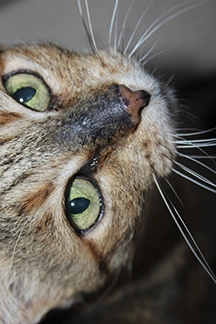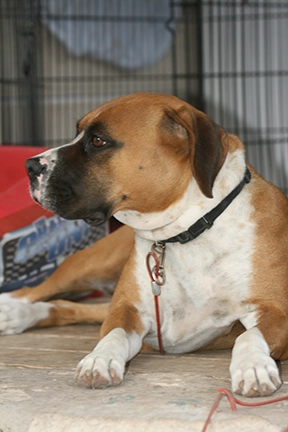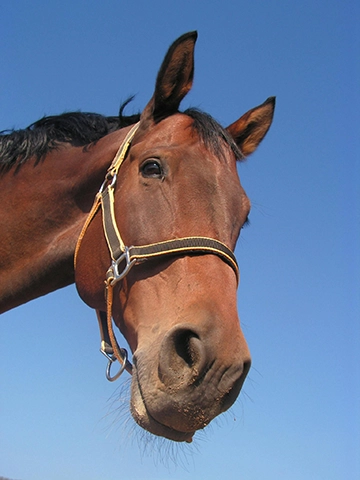Summer heat can be brutal, not just for humans but for our furry and four-legged companions, too. At Pogo Energy, we believe that energy efficiency goes hand-in-hand with caring for your entire household, including your pets. Whether you have a curious cat, loyal dog, gentle horse or fluffy rabbit, here’s what you need to know about how different animals handle the summer heat and how to keep pets cool during the summer.
General summer safety tips for all pets – Keep pets cool during the summer
- Hydration is key. Always provide clean, cool water.
- Avoid hot surfaces. Asphalt and concrete can burn paws.
- Groom appropriately. Regular brushing can help prevent overheating in long-haired animals.
- Monitor behavior. Know the signs of heat stress: excessive panting, drooling, lethargy, vomiting or collapse.
Cats and how they deal with hot weather
Cats generally tolerate heat better than some animals due to their desert ancestry, but that doesn’t mean they’re immune to overheating. Always ensure your cat has access to fresh water and a cool area to rest. Avoid overly active play during peak heat hours and watch for signs of heat stress, such as panting, drooling, or lethargy.
Like humans, cats do sweat, but have far fewer sweat glands than humans do. A cat’s sweat glands are in the hairless parts of their body, such as their paws and nose. You may notice wet paw prints or a runny nose in the heat, or when your feline companion is stressed, their body is doing its due diligence to cool down.
Bring your cats indoors if:
- The temperature exceeds 85°F
- You notice excessive panting or unusual behavior

Dogs can overheat quickly
Dogs, especially certain breeds, can struggle with summer temperatures. Brachycephalic breeds (short-nosed dogs like Bulldogs, Pugs and Boxers) are particularly at risk of heatstroke. Thick-coated breeds like Huskies or Newfoundlands also overheat more easily.
Like cats, dogs have sweat glands in their paws, which help them cool their body temperature in hot environments; however, their primary way of cooling off is by panting.
General heat safety tips for dogs:
- Provide constant access to water and shade
- Limit walks to early morning or late evening
- Never leave them in a parked car
- Use cooling mats or pet-safe kiddie pools
Bring your dogs indoors if:
- Temperatures climb above 80°F, especially for high-risk breeds
- They exhibit signs of heatstroke, like heavy panting, glazed eyes, or vomiting

Horses
Horses are large animals with a lot of body mass, which means they can get overheated quickly in intense heat or during exercise. They sweat to cool down, but sweating means they also lose vital electrolytes. You must be familiar with the signs of dehydration so you can effectively cater to your horse’s needs.
Signs of dehydration in horses include dull/dry eyes, dry mouth, loss of skin elasticity (perform a skin pinch test), slow capillary refill time, and dark urine. Severe dehydration can also cause colic and rapid heart rate, and your horse may refuse to drink on their own.

Horse heat safety tips:
- Hose them down or provide shade to cool off
- Provide ample water and salt blocks
- Schedule rides or training early or late in the day
Bring your horse into a shaded or ventilated barn if:
- The heat index is over 90°F
- They show signs of dehydration or appear exhausted.
Rabbits
Rabbits are highly sensitive to the heat and can suffer from heatstroke quickly. They do not sweat and rely heavily on their environment to stay cool, which means that you play an active part in keeping pets cool during the summer when the temperatures rise.
Rabbit heat safety tips:
- Keep their hutch out of direct sunlight
- Use frozen water bottles or ceramic tiles to help cool their space
- Ensure constant access to fresh, cool water
Bring rabbits indoors if:
- Temperatures exceed 75°F
- They appear lethargic or are breathing rapidly
The summer heat can pose serious risks to our beloved animals, but with summer safety awareness, knowledge of heat safety tips, and care, it’s easy to keep them safe. At Pogo Energy, we care about all members of your household. Keep an eye on the thermostat and your furry friends—and if you’re looking to reduce your energy costs while staying cool, we’re here to help with affordable prepaid electricity plans.
